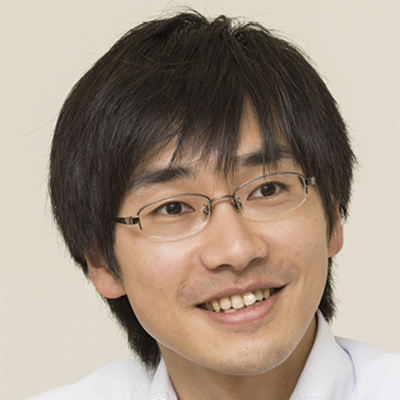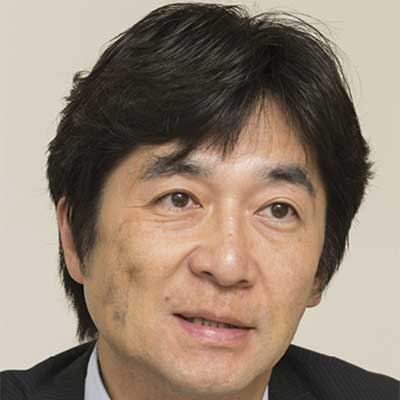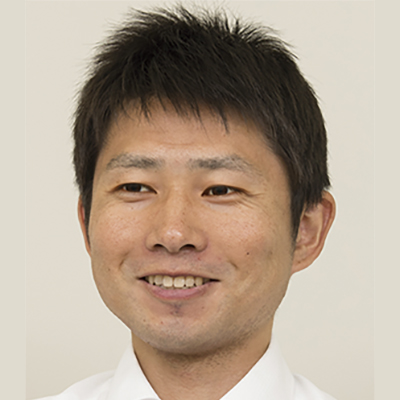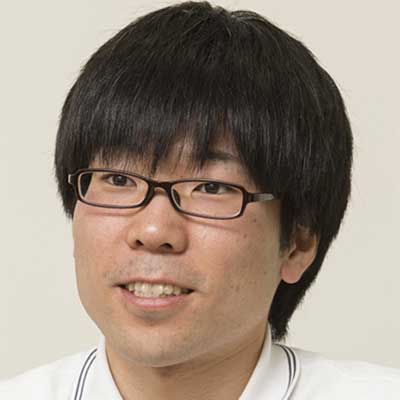Movements toward Public–Private Partnerships in the Field of Water Supply and Sewerage
In recent years, there has been rapidly growing interest in the sustainability and strength of social infrastructure. In Japan, there is progressive aging of facilities and equipment that were built mainly during Japan's period of rapid economic growth, and there is a decreasing number of skilled technicians who can maintain them. The functions of social infrastructure as a basis for supporting livelihoods must be fully maintained, yet investment budgets for this infrastructure are trending downward and large-scale natural disasters are occurring frequently.
In response to these problems, there are accelerating movements toward public–private partnerships to apply strengths of the private sector to the social infrastructure of the national government and municipalities. The field of water supply and sewerage is no exception. In 2013, the Ministry of Health, Labour and Welfare announced a policy for promoting public–private partnerships in the form of its “New Water Supply Vision” to promote safety, resilience, and sustainability. Also, in the “New Sewerage Vision” formulated by the Ministry of Land, Infrastructure, Transport and Tourism in 2014, the role of technology and expertise from private enterprises is intended to complement tasks performed by local governments. Hitachi, which promotes the development and provision of water environment solutions as part of its Social Innovation Business, is also enthusiastically working on public–private partnerships in the field of water supply and sewerage. A representative case is the full-service outsourcing of water supply and sewerage projects in Toda City, Saitama Prefecture.
Toda City's Plan toward Full-service Outsourcing
Figure 1Main Water Supply and Sewerage Facilities in Toda City
 Toda city blessed with easy access to Tokyo and an abundance of nature, for example, along the Arakawa River. The city is aiming to realize a “reliable water supply and sewerage system.”
Toda city blessed with easy access to Tokyo and an abundance of nature, for example, along the Arakawa River. The city is aiming to realize a “reliable water supply and sewerage system.”
 Takanori Makino
Takanori Makino
(Staff Member, Waterworks Facilities Division, Water Supply and Sewerage Department, Toda City)
 Takeshi Kurotsu
Takeshi Kurotsu
(Senior Engineer, Construction & Operation Engineering Department, Water Solutions Division, Water Business Unit, Hitachi, Ltd.)
To begin, an overview is given of water supply and sewerage projects in Toda City. The water supply serves approximately 138,000 people (as of June 2017) with a penetration rate of 100%. Water sources are prefectural water and groundwater received from the Saitama Public Enterprise Bureau. The city operates facilities such as three water filtration plants and 10 deep wells. The penetration rate of sewerage facilities is approximately 90%, and processing occurs at two pumping stations and 11 rainwater drainage facilities (see Figure 1).
The “Toda City Waterworks Vision 2014 (Revised Edition),” enacted in 2014, aims at the same three policies as those at the national level, those for safety, resilience, and sustainability. Meanwhile, the sewerage system vision is based on a fundamental policy for the “sustainability” and “evolution” of sewer systems in Toda City, with the goal of “mature sewers that support security, safety, and comfort.”
Under this vision, the Toda City Water Supply and Sewerage Department has been seeking more efficient business management to better sustain water supply and sewerage services, which are essential infrastructures for civic life, and also striving to continue providing services in the future. They found that methods for individually entrusting work to the private sector have had only limited effects, so a method has emerged called “full-service outsourcing,” which collectively entrusts works. Outsourcing was initially performed by individual business units, but in June 2015, the Water Supply and Sewerage Department began working as a whole when reviewing projects. The main agenda in reviews was the scope of the work to be consigned. Takanori Makino (Staff Member, Waterworks Facilities Division, Water Supply and Sewerage Department, Toda City), who was part of a review team comprising young representatives selected from each of the Waterworks Facilities Division, Sewerage Facilities Division, and Water Supply and Sewerage Management Division, describes the situation as follows:
“For example, inspections of waterworks and sewerage facilities are slightly different, so we spent a lot of time resolving those differences. In addition, expanding the scope of outsourcing brings about advantages of scale, but there's an absolute cost increase, so we have to consider that balance when narrowing down what tasks to consign. Most of those on the team were young people, so one positive side effect was that we were able to learn the details of what other sections were doing.”
In addition to the policy for full-service outsourcing, Toda City decided to switch from “specification orders,” where the city specified personnel arrangements and management methods in detail, to “performance orders,” which specify only outcome standards. In general, performance orders leave a wide range of tasks to the consignee's discretion, leaving room for them to demonstrate creative ingenuity. Following that, the Water Supply and Sewerage Department started selecting businesses through public offering proposal method, hoping to gain from the technology and expertise of private enterprises.
Figure 2Hitachi, Ltd., DK Corporation, and Hitachi Plant Services Co., Ltd.
 The three companies in the joint venture carry out their duties in a system that makes full use of their unique technologies and expertise.
The three companies in the joint venture carry out their duties in a system that makes full use of their unique technologies and expertise.
A joint venture consisting of Hitachi, Ltd., DK Corporation, Hitachi Plant Services Co., Ltd. applied for the public offering (see Figure 2). Takeshi Kurotsu (Senior Engineer, Construction & Operation Engineering Department, Water Solutions Division, Water Business Unit) describes the background as follows:
“In addition to providing water environment solutions and after-sale service, the Hitachi Group is engaged in a wide range of businesses, such as private finance initiatives aiming for sustainable water supply, so we believed we could meet the city's needs by making full use of our achievements. We also wanted to demonstrate our Internet of Things (IoT) technologies in the field of water supply and sewerage. In response to the public offering, we suggested various ways in which we could contribute to improving citizen services and sustainable business management.”
The proposal was reviewed by a selection committee consisting of seven people, including academic experts and citizen representatives, with the head of the Toda City Water Supply and Sewerage Department as chairperson. In addition to considering ability to perform the job, the review was conducted on the basis of private-sector expertise and ways in which the merits of full-service outsourcing were taken advantage of, and as a result, the joint venture headed by Hitachi, Ltd. was selected, and an outsourcing contract was signed in January 2016.
Various Effects Embodying the Water Vision and Sewerage Vision
A five-year period of full-service outsourcing of water supply and sewerage projects started in April 2016. This was the largest outsourcing of water supply and sewerage projects in Japan (at the time), covering one government building, three water filtration plants, 10 deep wells, four water quality monitoring stations, two pump stations, and 11 rainwater drainage facilities. The full-service outsourcing included 48 tasks, roughly classified as facility operation management for water supply and sewerage and those for customer service. In addition to these tasks, which were previously individually outsourced to the private sector, the joint venture also began taking applications for drainage facility construction that had previously been submitted to the Sewerage Facilities Division, along with completed construction inspections.
A system was created in which each of the three members of the joint venture applied their unique technologies and expertise. At first, there was a field structure of three persons appointed as task supervisors responsible for business operations, who managed a staff of over 50 people. Members involved in customer service were located at the Niizo-Minami Government Building, where the Water Supply and Sewerage Department is located, and members involved in facility operation management tasks were located at the Seibu Water Filtration Plant, the Niizo Pumping Station, and the Shimotoda Pumping Station (see Figure 3).
 Takaki Oshima
Takaki Oshima
(Staff Member, Water Supply and Sewerage Management Division, Water Supply and Sewerage Department, Toda City)
 Reo Seki
Reo Seki
(Staff Member, Sewerage Facilities Division, Water Supply and Sewerage Department, Toda City)
The effects of full-service outsourcing started to gradually appear about one year after its start. One effect came from the introduction of new technologies that were proposed. To improve the efficiency of operations management, in addition to maintenance inspections using tablet devices, Hitachi introduced support for meter reading using smartphones, with data on when meters were read and who read them being retained. The Water Supply and Sewerage Department was very satisfied to have a system for retaining these data.
As a result of this full-service outsourcing contract, the five-year administrative expenses for Toda City, previously estimated at 2 billion yen, was reduced to 1.7 billion yen. Takaki Oshima (Staff Member, Water Supply and Sewerage Management Division, Water Supply and Sewerage Department, Toda City), who is in charge of water rates, attributes this to newly possible cooperation between tasks. He describes his reasoning as follows:
“In the past, each department had separate desks for water supply and sewerage equipment construction, but after full-service outsourcing started, the consignee proposed transitioning to an integrated reception desk. This not only improved service for citizens and other users, but also made it possible to share water supply and sewerage work tasks among workers, improving the technical capabilities of the consignee. Also, when we received calls outside of reception hours from citizens needing to start using water services, or wanting to inquire about charges, we had previously just played a message asking them to call back the next day. However, close cooperation between personnel in customer service and at the water filtration plant now makes it possible to respond up through the end of business hours.”
Reo Seki (Staff Member, Sewerage Facilities Division, Water Supply and Sewerage Department, Toda City), describes the merits of unified management as follows:
“For the sewerage facilities within the city, we have two pumping stations and 11 rainwater drainage facilities, and we used to have separate outsourcing contracts for each. Previously, which pumps we needed to operate depended on where it was raining, and different locations would need to be monitored. Unified management enabled cooperation between each facility. Furthermore, in repairing rainwater drainage facilities, we can now compare equipment deterioration at all facilities, making it easier to prioritize which facilities should be repaired.”
On this point, Makino adds the following:
“I think that there are significant merits to being able to respond before equipment breaks down. Malfunctions in water supply and sewerage systems can directly affect the lives of citizens. Being able to operate facilities more stably than ever before is very helpful for me as a facility manager.”
These effects on the quality of routine maintenance management contribute to the “safety” and “sustainability” in the Water Supply Vision. A further effect is crisis management that contributes to “resilience.”
As Kurotsu says, “Unifying command through full-service outsourcing speeds up emergency response in the case of disasters and accidents. In October 2016, Toda City and the joint venture concluded a disaster-time agreement. In the event of a disaster, we hope to contribute to the region by supporting water supply activities, restoring water supply and sewerage facilities, and preventing the spread of damage.”
Together into the Future in a New Stage of Collaboration
Since starting full-service outsourcing, the Toda City Water Supply and Sewerage Department and the three-party joint venture have deepened their trust relationship through constant, mutual information sharing. At regular monthly meetings, water filtration plant, pump facility, and customer service managers from the joint venture exchange opinions with Toda City Water Supply and Sewerage Department officials after reporting on occurrences, discoveries, and so forth over the past month (see Figure 4). These meetings cover a wide variety of topics, including reports on periodic inspections, administrative reports related to issues such as the introduction of new handheld terminals for meter reading services, and thanks from citizens for rapidly responding to inquiries regarding noise from water filtration plants. After these regular meetings, Hitachi researchers sometimes introduce new technologies related to water supply and sewerage. In a campaign to promote direct debiting of water bills, closely coordinated with service tasks such as fee collection and meter readings, staff members from the three joint venture members stood with city staff on the street to directly engage with citizens (see Figure 5).
Figure 4Regular Monthly Meetings
 The Toda City Water Supply and Sewerage Department and the three joint venture members aim at constant information sharing at regular meetings held every month. After one such meeting on the day of the interviews for this article, Hitachi researchers were introducing new technologies related to supporting operation management at water filtration plants.
The Toda City Water Supply and Sewerage Department and the three joint venture members aim at constant information sharing at regular meetings held every month. After one such meeting on the day of the interviews for this article, Hitachi researchers were introducing new technologies related to supporting operation management at water filtration plants.
In July 2016, Makino's project team completed a monitoring manual for verifying and evaluating effects resulting from “performance orders” through full-service outsourcing. Furthermore, the Toda City Water Supply and Sewerage Department has begun discussions related to the future of the current full-service outsourcing. Specifically, they are considering modification and addition of work contents, such as inspection of industrial air-conditioning units in relation to legal revisions, and maintenance and management of pipelines for water supply and sewerage in the future. Initiatives such as this in Toda City have reportedly attracted attention from other municipalities experiencing similar challenges, as an advanced example of water supply and sewerage projects.
It goes without saying that water supply and sewerage is an important form of social infrastructure related to daily life. Hitachi will strive to develop a new stage in public–private partnerships, thereby contributing not only to the efficiency and sophistication of operation and maintenance management of facilities, but also the realization of sustainable water supply and sewerage projects.



